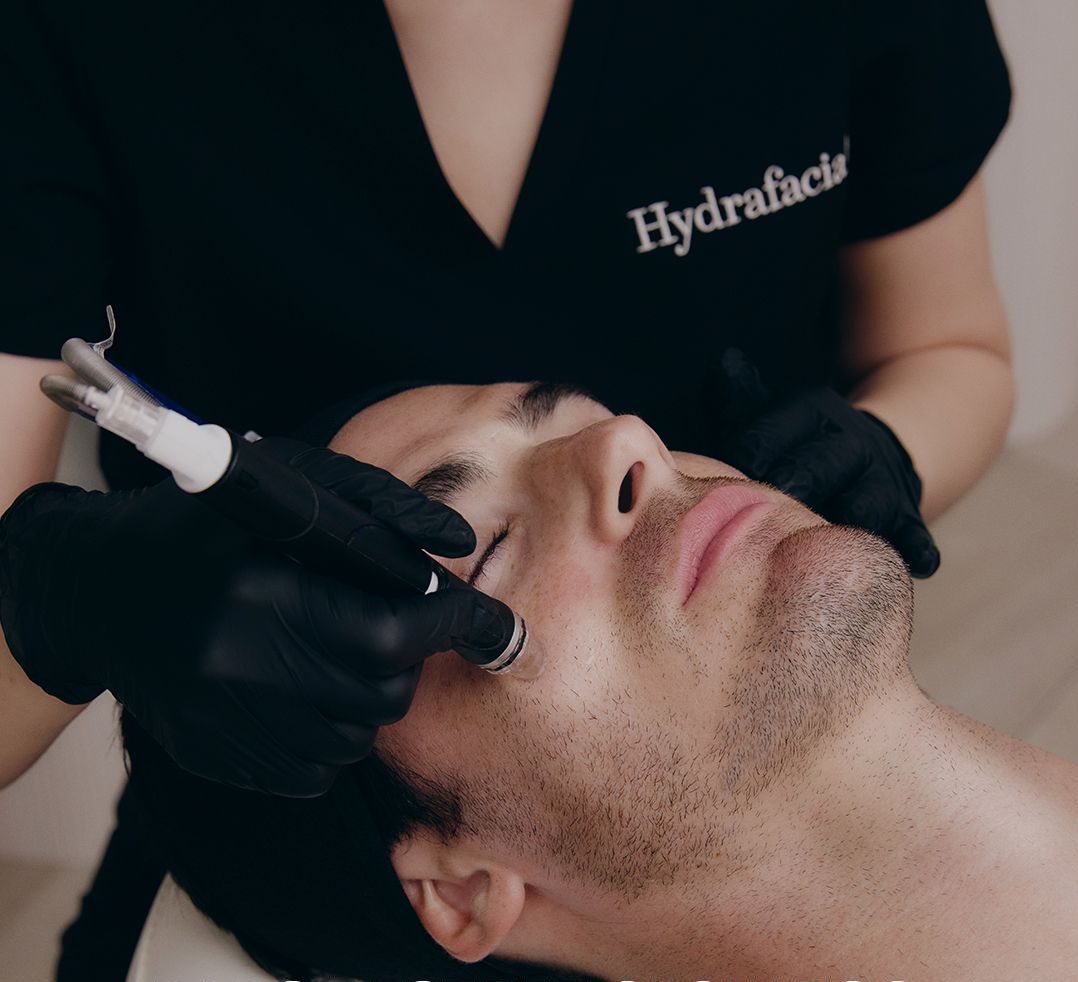Your Guide to Radiant Skin & Total Wellness
The Glomi Wellness Blog

In today’s fast-paced world, finding time for self-care can feel like a luxury. Between busy work schedules, family responsibilities, and endless to-do lists, prioritizing your skin and wellness often falls to the bottom of the list. But what if professional care could come to you? At Glomi Wellness Lab, we bring the power of medical aesthetics to your doorstep, offering transformative treatments like injectables, microneedling, and body contouring in the comfort and privacy of your own home. It’s not just a convenience, it’s a completely reimagined self-care experience. Here’s why in-home aesthetic treatments are becoming the preferred choice for those who want to look and feel their best, without compromising their time or comfort. 1. Grade Care Without the Commute Driving across town, waiting in a lobby, and sitting in a treatment room surrounded by strangers can turn a relaxing appointment into a stressful errand. With Glomi’s mobile services, there’s no need to leave your home. Our licensed medical professionals arrive with everything needed to deliver safe, high-quality care that meets the same clinical standards as a traditional office setting. 2. Personalized, One-on-One Attention Unlike busy med spas where providers may be rushing between patients, in-home sessions allow for undivided attention. You receive dedicated time with your provider, who will assess your goals, explain your options, and tailor every treatment to your unique needs. This focused, personalized approach not only enhances results but also ensures a more comfortable and confident experience. 3. A Discreet and Comfortable Setting Whether you're receiving neurotoxins for the first time or scheduling a microneedling session before a big event, privacy matters. With in-home treatments, you can skip the public waiting areas and enjoy the comfort of your own surroundings. No one needs to know unless you want them to. 4. Time-Saving and Flexible Scheduling We get it, your time is valuable. That’s why we offer flexible appointment times to fit around your lifestyle. No traffic, no wasted time in a waiting room, and no disruption to your daily routine. It’s self-care made simple, efficient, and accessible. 5. Elevated Experience, Every Time At Glomi Wellness Lab, we’re redefining what luxury medical aesthetics can look like. From our professional-grade equipment and advanced treatment protocols to the thoughtful details we bring into your space, every session is designed to deliver results while helping you feel pampered and at ease. Services That Come to You Our mobile aesthetic treatments include: Neurotoxins & Injectables (Filler) Microneedling Medical-Grade Chemical Peels EvolveX Body Contouring Medical Weight Loss Vitamin Shots & Peptides Prioritize Yourself, Without Leaving Home You don’t need to carve out an entire afternoon or sacrifice convenience to care for your skin and confidence. Glomi Wellness Lab brings the expertise, equipment, and results-driven treatments right to your doorstep so that you can enjoy medical aesthetics on your terms. Ready to upgrade your self-care routine? Book your virtual aesthetic consultation today and experience the ease of expert care, delivered right to your doorstep.

When it comes to achieving healthier, firmer, more radiant skin, microneedling stands out as one of the most effective non-surgical treatments available today. At Glomi Wellness Lab, we bring this powerful, clinically backed skin rejuvenation technique directly to your door so that you can experience professional results in the comfort of your own home. Whether you're new to microneedling or curious about how it works, this guide will walk you through the essentials of this transformative treatment. What Is Microneedling? Microneedling, also known as collagen induction therapy, involves using a specialized device equipped with fine, sterile needles to create controlled micro-injuries on the skin's surface. These micro-channels stimulate your body’s natural healing process, prompting the production of collagen and elastin, two proteins essential for smooth, firm, youthful-looking skin. What Skin Concerns Does Microneedling Treat? Microneedling is a versatile treatment that can address a wide range of common skin issues, including: Fine lines and wrinkles Acne scars and other types of scarring Hyperpigmentation and uneven skin tone Stretch marks Enlarged pores Skin laxity and dull texture Because microneedling encourages your skin to repair itself naturally, the results are subtle, gradual, and incredibly effective. How Does the Microneedling Process Work? At Glomi Wellness Lab, we offer an elevated and fully mobile microneedling experience tailored to your comfort and skin care goals. Here’s what a typical treatment involves: 1. Consultation and Skin Assessment Every journey begins with a personalized consultation to evaluate your skin type, goals, and any contraindications. This ensures microneedling is the proper treatment for you. 2. Numbing for Comfort A topical numbing cream is applied to minimize discomfort during the session. Most clients report feeling only mild pressure or tingling throughout the treatment. 3. Microneedling Application Using a handheld medical-grade microneedling device, your provider creates controlled micro-channels at a customized depth. These tiny openings trigger the body’s healing cascade and allow topical serums, like hyaluronic acid or exosomes, to penetrate deeply and work more effectively. 4. Post-Treatment Skincare and Aftercare After the procedure, provide you with detailed instructions to support your recovery and enhance results. You may experience mild redness or sensitivity for 1–3 days, similar to a light sunburn. What Results Can You Expect? While individual results may vary, many clients begin to notice an improvement in skin texture and tone within a week or two. Over time, as collagen remodeling continues, the skin becomes visibly smoother, firmer, and more youthful. For best results: A series of 3–6 treatments spaced 4–6 weeks apart is often recommended, depending on your specific goals. Why Choose Glomi Wellness Lab for Microneedling? At Glomi Wellness Lab, we combine advanced clinical protocols with the luxurious convenience of in-home care. Our expert providers deliver: Medical-grade equipment and sterile techniques Customized treatment plans tailored to your skin High-quality serums and enhancements , including exosomes Flexible scheduling and private, comfortable sessions right in your own space Experience the Glow from Home Microneedling provides a natural way to restore and rejuvenate your skin, eliminating the need for invasive procedures and downtime at a clinic. With Glomi Wellness Lab, professional medical aesthetics come to you. Book your virtual microneedling consultation today and take the first step toward firmer, smoother, more radiant skin.

In the world of medical aesthetics, neurotoxins and dermal fillers are two of the most popular non-surgical treatments available. Both can help you achieve a refreshed, youthful appearance—but they work in very different ways. If you're considering facial rejuvenation but aren't sure which treatment is right for you, Glomi Wellness Lab is here to help you make an informed decision. Let’s break down the key differences between neurotoxins and dermal fillers—and how to determine which option best fits your aesthetic goals. What Is Neurotoxins? Neurotoxins are a purified form of botulinum toxin that temporarily relaxes targeted muscles. By interrupting the nerve signals that cause muscles to contract, Neurotoxins smooths out dynamic wrinkles—lines formed by facial expressions like frowning, squinting, or smiling. Common areas treated with neurotoxins: Forehead lines Frown lines (the "11s" between the eyebrows) Crow’s feet (around the eyes) Bunny lines (on the nose) Lip lines and chin dimpling Neurotoxins are ideal for: Reducing the appearance of wrinkles caused by repeated muscle movement and preventing the deepening of expression lines over time. What Are Dermal Fillers? Dermal fillers are injectable gels made from substances like hyaluronic acid, calcium hydroxylapatite, or poly-L-lactic acid. Rather than affecting muscle movement, fillers add volume beneath the skin to smooth wrinkles, enhance facial contours, and restore a youthful fullness. Common areas treated with dermal fillers: Cheeks (for volume loss) Nasolabial folds (smile lines) Lips (for plumping and definition) Under-eye hollows (tear troughs) Jawline and chin (for contouring) Dermal fillers are ideal for: Replacing lost volume, sculpting facial features, and softening deeper folds and static wrinkles (wrinkles visible even when the face is at rest).





